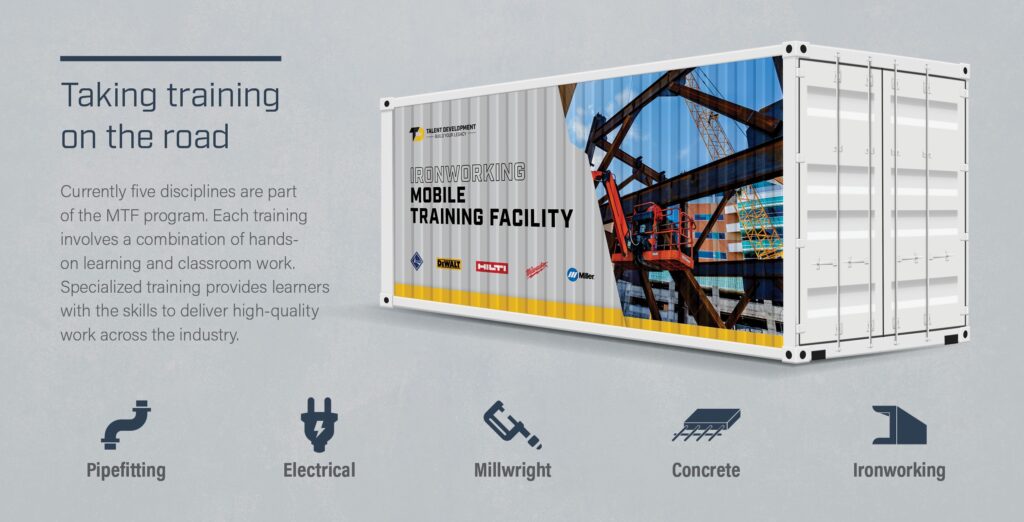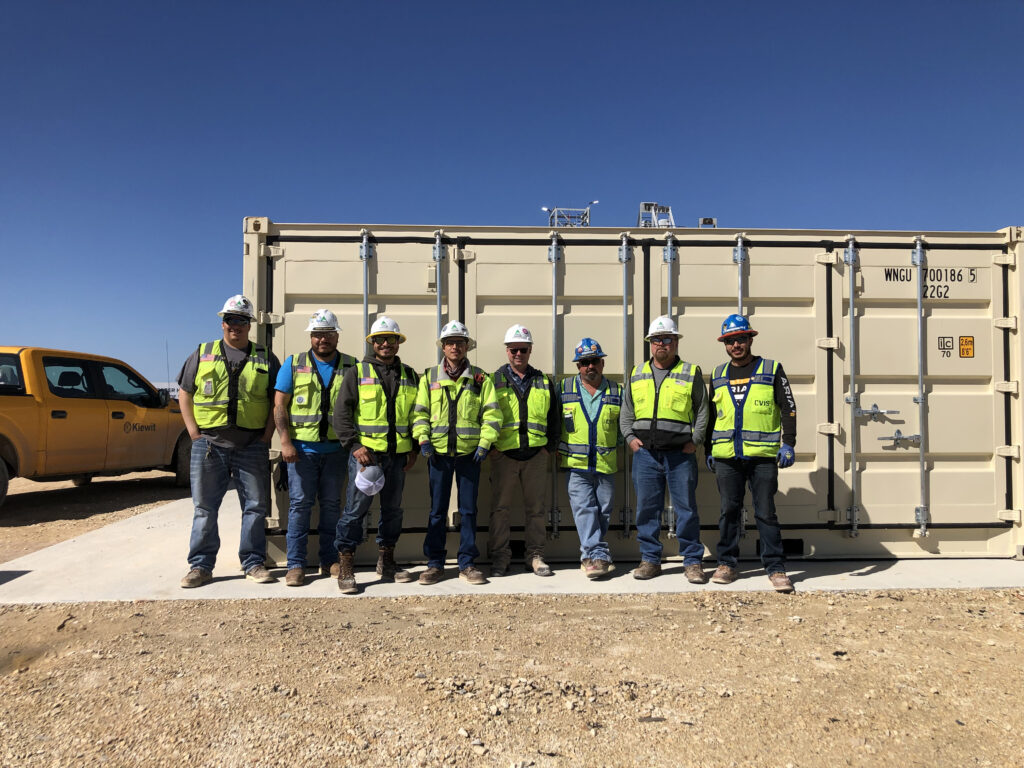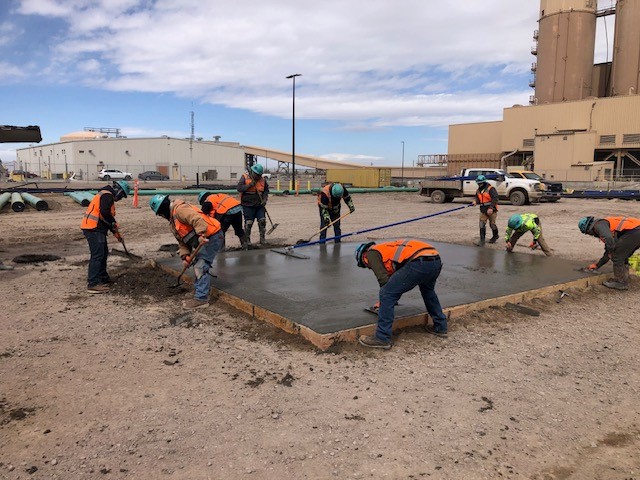Craft workers are in high demand on construction projects across North America and Kiewit projects are no exception.
With an established, formal craft training program, partnered closely with the National Center for Construction Education and Research (NCCER), Kiewit is not only prepared to meet this need, but it expands development opportunities beyond the walls of its Training Center in Colorado.
To help craft workers build long-lasting careers, no matter where they are, Kiewit has figured out a way to replicate its state-of-the-art training facility in fully loaded, mobile Conex box classrooms.

Conex boxes to classrooms
Kiewit’s Talent Development team worked closely with craft instructors to quickly and cost effectively expand upon the training opportunities already available. These Mobile Training Facilities (MTFs) began as two empty 20-foot Conex boxes; one with workstations for learners and one to store the tools, equipment and materials required to complete the training for a specified craft discipline. The team assembles and stocks the facilities at the Training Center before shipping them to project sites.
“These facilities allow us to provide career-changing training opportunities on the project, meeting workers where they are,” said Ron Duce, Field and Craft Operations Director.
The MTF for concrete includes supplies for the hands-on portion of training, such as building formwork for foundations and pouring a concrete slab. Similarly, the electrical facility is entirely self-contained with materials and tools included to run conduit, wire switches and more.
The electrical MTF has separate workstations for each learner simulating an electrical room. MTFs for pipefitting, millwright and ironworking each have toolboxes for learners filled with everything they need to perform their respective trades.
While MTFs have a smaller square footage than their fixed facility counterparts, the impact is still the same. “We didn’t take any shortcuts when creating these Conex facilities,” said Josh Domme, Training Center manager. “They’re a replication of the workstations used at the Training Center.”
That means learners in the field are getting the same quality of education they receive in Colorado. Look no further than their test scores for proof of success. In the concrete module, learners must take a pre- and post-course exam. Once they’re finished with mobile training, Domme says their scores increase by about 40 percent.
Adding value to careers and clients
The NCCER accreditation that craft receive from Kiewit training is the industry standard. These universal skills, paired with additional leadership-focused and career development workshops, set craft up for success on Kiewit projects and across the industry.
Once a training session is underway, craft will walk away with new skills and a NCCER learner identification number. All trainings use learning materials from the NCCER program with learners taking written and performance testing at the completion of each module, obtaining industry recognized credits during the courses.
Currently, the MTFs are being utilized for predominantly Level 1 and Level 2 trainings in each discipline. Kiewit plans to investigate expanding the training to higher levels and to more projects.
These credentials document the knowledge and skills of craft, which can result in career advancement and ensure clients know our workforce is well equipped to build the work. Additionally, craft who have received training at Kiewit typically remain with the company longer.
“Training is an investment, and as we invest in these employees we can expect to retain more craft on our projects,” said Domme. “Regardless of background, this program will set you up for success.”
Craft professionals are paid throughout the training and schedules are set up to take advantage of projects’ fluctuating workloads. Meaning, when there is a decline in work happening on the job, there is an increase in on-site training opportunities.
Projects vary in their level of schedule flexibility and training needs. According to Domme, the MTFs serve as an extension of the Training Center to be used on projects with a bigger workforce and greater training demands.
On-site training also provides a collaborative and comfortable environment for craft. Kermit Feser, electrical craft instructor, has seen an increase in learners’ focus during his MTF courses. “They’re more comfortable and more tuned in. They want to do well because their foreman might come walking by and see them working and they want to present a good image,” said Feser.
Not only do craft benefit from mobile training — but the entire project benefits from increased onsite expertise.
“Since we’re on the project, if they have something that other workers are not familiar with, we can incorporate that into a lesson and provide real-time training for these students,” said Feser.
Shane McDougall, concrete craft instructor, has been running concrete trainings out of an MTF since 2022. McDougall says the real value comes from teaching craft not only how to do a skill correctly, but why it is so important to complete the work in a specific way.
“The goal here is to develop our next generation of foreman, superintendents, even project managers,” said McDougall. “So letting our workers develop not only their technical skills, but also some of the simple but necessary tools to grow their career is huge,” said McDougall.
Since the first MTF was launched, over 150 craft professionals have received training. Kiewit’s Talent Development team plans to increase that number to 300 by the end of 2023. Approximately 50% of Level 1 and 2 trainings already take place in MTFs.
These trainings cover basic core construction topics and the entry level coursework needed for a discipline, part of the NCCER’s level 1 and 2 standardized training modules. Learners are required to pass both written knowledge and hands-on performance tests to receive credit for the school and advance to the next level.
“By going out and training our craft on the job helps show how much they are valued. It makes them want to perform their work better, be more attentive and ask the right questions,” said McDougall. “When everyone on the crew has the ability to ask questions and say, ‘That doesn’t look right,’ that’s when we know this has been a success.”




